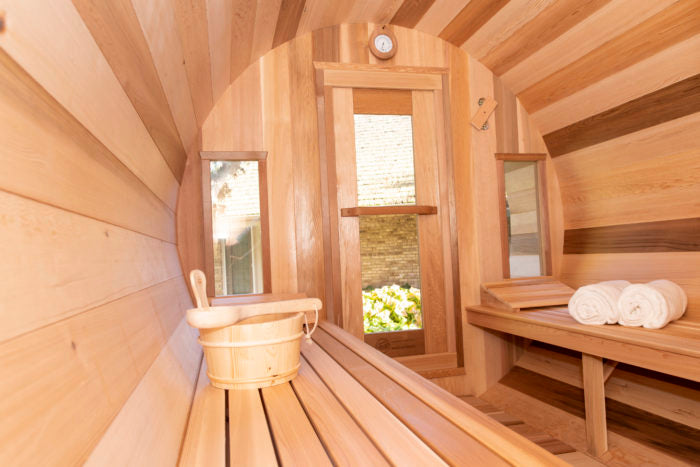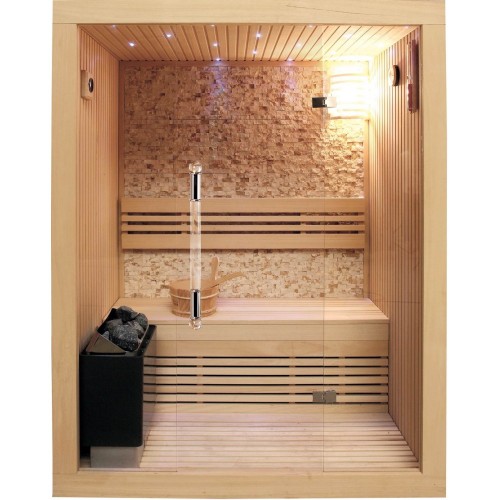Not known Facts About Traditional Sauna
Wiki Article
Getting The Traditional Sauna To Work
Table of ContentsFascination About Traditional SaunaFacts About Traditional Sauna UncoveredSome Ideas on Traditional Sauna You Need To KnowThings about Traditional Sauna
The majority of the weight shed in a sauna is water loss and is re-gained upon rehydrating. Without a question sauna can be an essential component of a healthy and balanced weight loss program. To take a look at the distinctions in between conventional and IR saunas, I will certainly separate these right into proven, academic, and fabricated differences.Hence, the most popular point in the saunawhich goes to the ceiling straight over the sauna heateris generally in between 185 and 190 F. Traditional Sauna. Claims that a typical sauna exceeds 200 F is merely not true and not suitable for electrical saunas sold in the United States. The temperature for a far-infrared sauna is usually set between 120 and 140 F; nevertheless, unlike the typical sauna, the goal in and IR room is not to attain a high temperature level
Due to the fact that of this, the temperature level distinction is practically unnecessary, because excessive sweating causes both sauna types, however the method of warming the body is different. In an IR sauna the bather will really feel warm and will sweat a lot, but at a lot reduced temperatures. Therefore, if the objective is to invest longer periods of time in the sauna, the IR sauna is a great selection.

Traditional Sauna Can Be Fun For Anyone
When the high temperature is achieved, the components cycle on and off to maintain the heat. Many typical sauna users take pleasure in putting water over the rocks to produce heavy steam to increase sauna humidity levels. The advantages of pouring water over the rocks include: making the space much more comfy, dampening the nasal flows, and enabling the usage of aromatherapy by mixing vital oils with the water.In a far-infrared sauna, the heat waves permeate the body to efficiently heat the body and raise the body core temperature level. To accomplish this boosted temperature, Far-infrared emitters develop infrared power which is close to the exact same wavelength as that which the body normally emitsoften referred to as the "Important Array" of 7 to 14 microns), so the click power is well gotten by the body.
When the energy goes into the body, it causes the body temperature to increase and ultimately causes sweat. In an infrared sauna it is necessary for the emitters/heaters to continue to be on nearly regularly. Considering that there is no mass of rocks to keep heat, the sauna will certainly cool down if the emitters turned off.
As discussed above, the sauna bather in an infrared room intends to position himself in front of operating emitters to obtain maximum benefit from the warmth. The heating time for both areas can be extremely different, relying on exactly how the rooms are utilized. For a traditional sauna, a bather ought to enable 30-40 minutes for the space to attain a preferred temperature level and to effectively pre-heat the rocks.
The Facts About Traditional Sauna Revealed
A well built sauna will usually accomplish a temperature of 150-160 F in concerning 30-40 minutes (Traditional Sauna). For hotter temperature levels, the room may need to warmth for a longer duration. Once the space achieves established temperature level, the heating system will certainly cycle on and off, generally running concerning 50% of the time. The insulated walls and the heated rocks will keep the space hot and at stable temperature levels.To some, 15 minutes was "lost" while the infrared energy heated the wood panels instead of heating up a body, while others discover a pre-heated space to be extra comfy and think a raised starting temperature level is essential to start sweating. The size of advised usage for each and every area is roughly check my blog the exact same (10-15 mins per session); nonetheless, as a result of the lower air temperature levels and the ability to feel the impacts of infrared heat much faster than a standard sauna, it is not uncommon for an individual to invest a total amount of 20-30 mins in an infrared sauna.
Typical saunas often tend to be larger (thus use even more power) than infrared saunas, although standard saunas are definitely available in one and two individual sizes. For a two-person traditional sauna, 5x6 or 5x7 dimension is most prominent. The top bench can conveniently seat 2 or 3 people and is also enough time to explanation rest during the sauna session.


The typical cost per kWH of electrical energy in the U.S. is around $0.11, so a 4.5 kW heater will certainly set you back roughly $.50 to compete one hour, if the heater runs continually for one hour. Generally a sauna heating system will compete 75% of the first hour and 50% of subsequent hours on given that the elements cycle once the established temperature level is achieved.
See This Report on Traditional Sauna
A 2 person far-infrared room is usually physically smaller sized than a traditional sauna, commonly concerning 4' x 4' or smaller sized. The IR furnace is generally 1.5-1.7 kW utilizing a 120 volt 15 amp plug-in service. Considering that the space can be made use of earlier than a sauna area, we will certainly think the area is utilized for to of an hour including heat up time.Lastly, there is a rarely talked about difference in the social experience between both rooms. While our culture has lost a few of the social benefit of the typical sauna experience, it can be really socially rewarding. From family time in the sauna, to heart-felt discussions with substantial others, to sauna partiesthe typical sauna experience can bring about intimate mingling.
Most greater end infrared areas include tinted light treatment, noise systems and full-glass fronts.
Report this wiki page